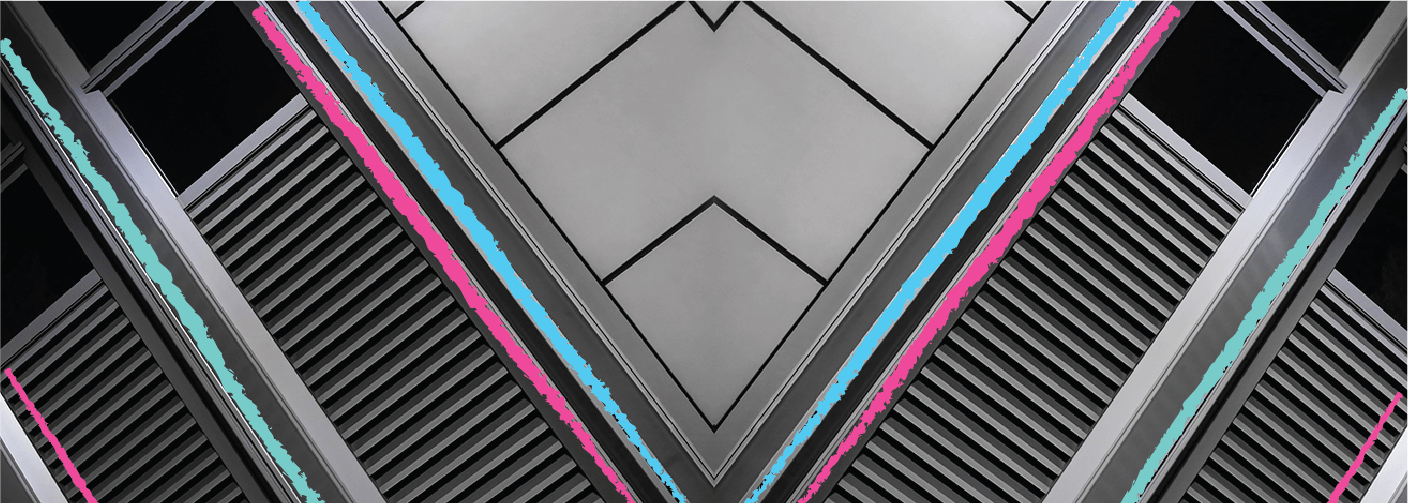Recognize Faces in Live Streaming Video using Amazon Kinesis & Rekognition

Amazon Rekognition is an AWS service for image & video analysis. It can identify objects, people, text, scenes, & activities. It also provides facial analysis, face comparison, & face search capabilities. You can detect, analyze, & compare faces for a wide variety of use cases, including user verification, cataloging, people counting, & public safety. We will build one such system in this article.
Use Cases
As you can imagine, the ability to detect faces in realtime can be put to use in many places: from intruder alert systems to allowing employee access into office buildings, or tracking employee or student attendance in offices & schools. Most of us already use face recognition to unlock our phones. For more such use cases, check out FaceFirst’s list of 21 Amazing Uses for Face Recognition.
What are we building?
What we want is to build a system that can ingest live streaming video, analyze it in realtime, detect faces & inform us of it. We will use Amazon Kinesis Video Streams to ingest the live streaming video & Amazon Rekognition Video to detect faces. The architecture is as follows:

Let us walk through the entire flow once (from left to right above), before we start building individual components. The system works as follows:
- An IP camera app installed on your phone captures live video & serves it on your local WiFi network.
- The Kinesis video stream producer app running in a Docker container on your computer, pulls the video stream from the app via an RTSP URL & pushes it to a Kinesis video stream in AWS.
- A Rekognition video stream processor pulls video from the Kinesis video stream, looks for faces in it (already indexed in a Rekognition faces collection) & publishes its findings to a Kinesis data stream.
- A Lambda function fetches the results from the Kinesis data stream & logs them to CloudWatch.
Before You Begin
There are several key aspects of this system you should know before you start building it:
- The Rekognition video streaming API is only available in 5 regions: Virginia, Oregon, Tokyo, Frankfurt & Ireland.
- Use CloudPing.co to find the closest supported region to you. I’m near Mumbai so I chose Frankfurt. You’ll see
eu-central-1as the chosen region throughout this article.- Side note: All AWS CLI command outputs shown in this article are in YAML, instead of the default JSON.
- CloudFormation does not support Rekognition & Kinesis video streams so you won’t be able to automate the creation of these resources.
Now that you’re aware of the gotchas, let’s start building!
Faces Collection
We’ll start by uploading images of people who should be recognized in the video. For testing, you can upload a single image of yours in a bucket. Then create a Rekognition collection:
aws rekognition create-collection \
--collection-id my-rekognition-collection
CollectionArn: aws:rekognition:eu-central-1:123456789012:collection/my-rekognition-collection
FaceModelVersion: '5.0'
StatusCode: 200Then, index the image you uploaded into this collection:
aws rekognition index-faces \
--collection-id my-rekognition-collection \
--image '{"S3Object":{"Bucket":"my-rekognition-faces-bucket","Name":"HarishKM.jpg"}}'Rekognition will return a lot of details about the face:
FaceModelVersion: '5.0'
FaceRecords:
- Face:
BoundingBox:
Height: 0.7871654033660889
Left: 0.2684895694255829
Top: 0.21874068677425385
Width: 0.5820778012275696
Confidence: 99.99998474121094
FaceId: bade4904-120b-4f88-8b91-9e220609fa13
ImageId: e59b074a-6e91-3607-9129-ce9e06d5ecd7
FaceDetail:
BoundingBox:
Height: 0.7871654033660889
Left: 0.2684895694255829
Top: 0.21874068677425385
Width: 0.5820778012275696
Confidence: 99.99998474121094
Landmarks:
- Type: eyeLeft
X: 0.3342727720737457
Y: 0.5150454640388489
- Type: eyeRight
X: 0.596184253692627
Y: 0.48627355694770813
- Type: mouthLeft
X: 0.3805276155471802
Y: 0.7633035182952881
- Type: mouthRight
X: 0.5991687178611755
Y: 0.7384595274925232
- Type: nose
X: 0.489641398191452
Y: 0.6344687938690186
Pose:
Pitch: 7.072747230529785
Roll: -5.585822105407715
Yaw: 2.5462570190429688
Quality:
Brightness: 76.02369689941406
Sharpness: 78.64350128173828
UnindexedFaces: []Kinesis Streams & IAM Role
Next, create a Kinesis video stream & a Kinesis data stream with their default configuration. Note down their ARNs. We’ll need them next.
Since Rekognition would be reading from Kinesis video & writing to Kinesis data, it needs permissions to do so. So head on over to the IAM console & create an IAM role. Select Rekognition as the service that will be assuming this role. Finish creating it with the defaults. Now detach the IAM policy attached to it & attach a new inline IAM policy as shown below:
{
"Version": "2012-10-17",
"Statement": [
{
"Effect": "Allow",
"Action": [
"kinesis:PutRecord",
"kinesis:PutRecords"
],
"Resource": "arn:aws:kinesis:eu-central-1:123456789012:stream/my-kinesis-data-stream"
},
{
"Effect": "Allow",
"Action": [
"kinesisvideo:GetDataEndpoint",
"kinesisvideo:GetMedia"
],
"Resource": "arn:aws:kinesisvideo:eu-central-1:123456789012:stream/my-kinesis-video-stream/1616144781359"
}
]
}Lambda Function
Create a Node.js 14 Lambda function with this code:
exports.handler = async event =>
event.Records.forEach(record =>
console.log(new Buffer(record.kinesis.data,
'base64').toString('ascii')))Add the Kinesis data stream as a trigger to this Lambda function.
Rekognition Video Stream Processor
Now let’s create the stream processor. This is the heart of the system. It pulls video from Kinesis video, analyzes it & pushes results to Kinesis data:
aws rekognition create-stream-processor \
--name my-rekognition-video-stream-processor \
--role-arn arn:aws:iam::123456789012:role/my-rekognition-role \
--settings '{"FaceSearch":{"CollectionId":"my-rekognition-collection"}}' \
--input '{"KinesisVideoStream":{"Arn":"arn:aws:kinesisvideo:eu-central-1:123456789012:stream/my-kinesis-video-stream/1616144781359"}}' \
--stream-processor-output '{"KinesisDataStream":{"Arn":"arn:aws:kinesis:eu-central-1:123456789012:stream/my-kinesis-data-stream"}}'
StreamProcessorArn: arn:aws:rekognition:eu-central-1:123456789012:streamprocessor/my-rekognition-video-stream-processorNext, start the stream processor:
aws rekognition start-stream-processor \
--name my-rekognition-video-stream-processorThis does not return any output so check the stream’s status by running aws rekognition list-stream-processors. It should be running. If not, it’s most likely a permission issue with the IAM role you created earlier.
StreamProcessors:
- Name: my-rekognition-video-stream-processor
Status: RUNNINGIP Camera
We’re almost ready to stream but before that, install IP Webcam from the Google Play store. Once done, open it & make the following settings:
- Set
Main cameratoFront camerainVideo preferences. - Set
Video resolutionto640x480inVideo preferences. - Set
Audio modetoDisabled. - Tap
Start server.
Note the IP of your phone displayed on screen. Your Phone & computer should be connected to the same WiFi network.
Start Streaming!
This is where the magic happens!
Instead of building a Kinesis video producer from scratch, you can use a Docker container I’ve built & published with the producer ready to go. First, pull it:
docker pull kmharish/kvs-producerIt’s a HUGE image (3 GB)! So give it a while to download.
Once that’s done, run it like so:
docker run \
--network host \
-e AWS_DEFAULT_REGION=eu-central-1 \
-it kmharish/kvs-producer \
<aws-access-key-id> \
<aws-secret-access-key> \
rtsp://<android-ip>:8080/h264_pcm.sdp \
my-kinesis-video-streamLeave it running & open your video stream in the Kinesis console. Open Media playback to see the video streaming live from your phone to AWS!
Who’s on Camera?
As soon as you see your video in Kinesis console, the Rekognition stream processor has started its analysis behind the scenes. Within minutes, it should have pushed quite a bit of data to the Kinesis data stream. Open the Lambda function’s logs in CloudWatch. It should have logged something like this:
{
"InputInformation": {
"KinesisVideo": {
"StreamArn": "arn:aws:kinesisvideo:eu-central-1:123456789012:stream/my-kinesis-video-stream/1616144781359",
"FragmentNumber": "91343852333289682796718532614445757584843717598",
"ServerTimestamp": 1510552593.455,
"ProducerTimestamp": 1510552593.193,
"FrameOffsetInSeconds": 2
}
},
"StreamProcessorInformation": {
"Status": "RUNNING"
},
"FaceSearchResponse": [
{
"DetectedFace": {
"BoundingBox": {
"Height": 0.075,
"Width": 0.05625,
"Left": 0.428125,
"Top": 0.40833333
},
"Confidence": 99.975174,
"Landmarks": [
{
"X": 0.4452057,
"Y": 0.4395594,
"Type": "eyeLeft"
},
{
"X": 0.46340984,
"Y": 0.43744427,
"Type": "eyeRight"
},
{
"X": 0.45960626,
"Y": 0.4526856,
"Type": "nose"
},
{
"X": 0.44958648,
"Y": 0.4696949,
"Type": "mouthLeft"
},
{
"X": 0.46409217,
"Y": 0.46704912,
"Type": "mouthRight"
}
],
"Pose": {
"Pitch": 2.9691637,
"Roll": -6.8904796,
"Yaw": 23.84388
},
"Quality": {
"Brightness": 40.592964,
"Sharpness": 96.09616
}
},
"MatchedFaces": [
{
"Similarity": 88.863960,
"Face": {
"BoundingBox": {
"Height": 0.557692,
"Width": 0.749838,
"Left": 0.103426,
"Top": 0.206731
},
"FaceId": "ed1b560f-d6af-5158-989a-ff586c931545",
"Confidence": 99.999201,
"ImageId": "70e09693-2114-57e1-807c-50b6d61fa4dc",
"ExternalImageId": "HarishKM.jpg"
}
}
]
}
]
}The last line above shows the image that matched the face!
Cleanup
After you’ve played with it to your heart’s content, it’s time to destroy it all! Follow these steps:
- Stop the Docker container (the Kinesis producer) & close the IP camera app.
- Stop & delete the stream processor:
aws rekognition stop-stream-processor --name my-rekognition-video-stream-processoraws rekognition delete-stream-processor --name my-rekognition-video-stream-processor
- Delete the Lambda function & the Kinesis video & data streams.
- Delete the Rekognition faces collection:
aws rekognition delete-collection --collection-id my-rekognition-collection
- Delete the S3 bucket.
References
This was not an easy project! I’m very grateful to the people who have tried something like this before me & wrote about it online. I referred the following resources to build this system:
- Amazon Rekognition developer guide: Working with streaming videos
- AWS samples on GitHub: Amazon Rekognition video analyzer
- Medium article by ZenOf.AI: Real Time Face Identification on Live Camera Feed using Amazon Rekognition Video and Kinesis Video Streams
- Medium article by Matt Collins: Facial Recognition with a Raspberry Pi and Kinesis Video Streams
About the Author

Harish KM is an AWS Developer at QloudX. He is passionate about creating zero-maintenance fully-serverless cloud-native solutions in AWS. With 20+ cloud & IT certifications, he is an expert in a multitude of technologies, especially serverless.






